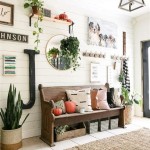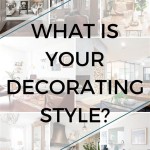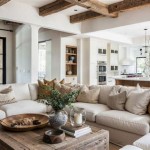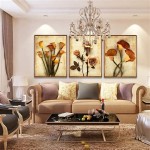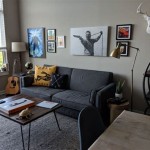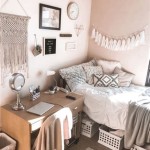Inside House Decorating Ideas: A Comprehensive Guide
Interior decorating is a multifaceted process that involves enhancing the aesthetics and functionality of an interior space. It encompasses a wide range of elements, from selecting color palettes and furniture to optimizing lighting and incorporating decorative accessories. A well-decorated living space should reflect the personal taste of its occupants while also creating a comfortable and inviting atmosphere. This article will explore various inside house decorating ideas, providing insights into key design principles and practical strategies for achieving a harmonious and stylish interior.
Understanding Design Principles: The Foundation of Interior Decor
Before embarking on any decorating project, it is crucial to understand the fundamental design principles that underpin effective interior design. These principles serve as guidelines for creating visually appealing and balanced spaces. Ignoring these principles can lead to a disjointed and unharmonious result.
Balance refers to the distribution of visual weight within a space. This can be achieved through symmetrical balance, where identical elements are mirrored on either side of a central axis, or asymmetrical balance, where dissimilar objects are arranged to create a sense of equilibrium. Asymmetrical balance often feels more dynamic and natural.
Proportion concerns the relative size and scale of elements within a room. A well-proportioned space avoids extremes in size or scale that can feel uncomfortable or visually jarring. For example, a large sofa in a small room can overwhelm the space, while a tiny rug under a large dining table can appear inadequate.
Harmony is the cohesive quality that results from the effective combination of different elements. This involves selecting colors, patterns, and textures that complement each other, creating a unified and visually pleasing composition. A harmonious space feels calming and inviting.
Rhythm is the repetition of visual elements to create a sense of movement and visual interest. This can be achieved through repeating colors, patterns, shapes, or textures throughout a space. Rhythm helps to guide the eye and create a dynamic and engaging environment.
Emphasis involves creating a focal point that draws the eye and serves as the primary visual element in a room. This could be a fireplace, a piece of art, a statement lighting fixture, or a strategically placed piece of furniture. The focal point should be visually dominant and serve as an anchor for the overall design.
Color Palette Selection: Setting the Mood and Atmosphere
The color palette is arguably one of the most important aspects of interior decorating. Colors have a profound impact on mood and can significantly influence the overall atmosphere of a space. When selecting a color palette, consider the purpose of the room, the amount of natural light available, and the desired emotional response.
Warm colors, such as reds, oranges, and yellows, tend to create a sense of energy, warmth, and intimacy. They are often used in living rooms and dining rooms to promote conversation and socialization. However, using too much of a warm color can make a space feel overwhelming or claustrophobic.
Cool colors, such as blues, greens, and purples, evoke feelings of calmness, serenity, and relaxation. They are often used in bedrooms and bathrooms to create a peaceful and tranquil environment. However, using too much of a cool color can make a space feel cold or sterile.
Neutral colors, such as white, beige, gray, and black, provide a versatile backdrop that can be used in any room. They can be paired with pops of color to create visual interest or used on their own for a minimalist and sophisticated look. Neutral colors are particularly useful for creating a sense of spaciousness and airiness.
When choosing a color palette, consider the color wheel and the relationships between different colors. Complementary colors are those that are opposite each other on the color wheel, such as blue and orange. They create a sense of contrast and visual excitement. Analogous colors are those that are adjacent to each other on the color wheel, such as blue, blue-green, and green. They create a sense of harmony and serenity. Triadic colors are three colors that are evenly spaced on the color wheel, such as red, yellow, and blue. They create a sense of balance and vibrancy.
Testing paint colors on a small section of the wall before committing to the entire room is advisable, observing how the colors appear under different lighting conditions throughout the day. This can help avoid costly mistakes and ensure that the chosen colors achieve the desired effect.
Furniture Selection and Arrangement: Functionality and Aesthetics
Furniture plays a crucial role in both the functionality and aesthetics of an interior space. When selecting furniture, consider the size of the room, the intended use of the space, and the overall style of the design. It is important to choose pieces that are both comfortable and visually appealing.
Living Room Furniture: A typical living room arrangement includes a sofa, armchairs, a coffee table, and possibly a media console or bookshelf. The sofa is often the focal point of the room and should be positioned to maximize comfort and conversation. Armchairs can be arranged around the sofa to create a seating area. The coffee table should be placed within easy reach of the sofa and armchairs. Consider traffic flow when arranging furniture in the living room, ensuring that there are clear pathways for movement.
Bedroom Furniture: The bed is the centerpiece of the bedroom and should be positioned strategically to maximize comfort and relaxation. Nightstands should be placed on either side of the bed to provide convenient storage and lighting. A dresser or chest of drawers is essential for storing clothing. Consider adding an armchair or chaise lounge to create a comfortable reading nook.
Dining Room Furniture: The dining table and chairs are the primary elements in the dining room. The table should be appropriately sized for the room and the number of people who will be using it. Chairs should be comfortable and supportive. Consider adding a sideboard or buffet to provide additional storage and serving space. A rug can help to define the dining area and add warmth to the space.
Furniture Arrangement Tips: Create a focal point by positioning furniture around a fireplace, a window with a view, or a piece of art. Leave adequate space between furniture pieces to allow for comfortable movement. Use rugs to define different areas within a room. Consider the scale of the furniture in relation to the size of the room. Avoid overcrowding a space with too much furniture. Prioritize comfort and functionality when selecting and arranging furniture.
Lighting Design: Illuminating the Space and Enhancing Ambiance
Lighting plays a vital role in interior decorating. It affects not only the visibility of a space but also the mood and ambiance. A well-designed lighting scheme should incorporate a combination of different types of lighting to create a balanced and functional environment.
Ambient Lighting: Ambient lighting provides overall illumination for a room. It is often achieved through ceiling fixtures, such as chandeliers, pendant lights, or recessed lighting. Ambient lighting should be soft and diffused to create a comfortable and inviting atmosphere.
Task Lighting: Task lighting provides focused illumination for specific activities, such as reading, cooking, or working. It is often achieved through desk lamps, under-cabinet lighting, or floor lamps. Task lighting should be bright and direct to provide adequate visibility for the task at hand.
Accent Lighting: Accent lighting is used to highlight specific features, such as artwork, architectural details, or decorative objects. It is often achieved through spotlights, track lighting, or wall sconces. Accent lighting should be strategically placed to create visual interest and draw attention to the desired features.
When selecting light fixtures, consider the style of the room and the overall design aesthetic. Chandeliers and pendant lights can add a touch of elegance and sophistication, while recessed lighting and track lighting can provide a more modern and minimalist look. Choose light bulbs with the appropriate color temperature to create the desired mood. Warm light bulbs (2700K-3000K) create a cozy and inviting atmosphere, while cool light bulbs (4000K-5000K) create a more bright and energizing environment.
Dimmer switches allow for adjusting the intensity of the lighting, creating different moods and ambiance. Using smart lighting systems enables control over the lighting remotely, offering convenience and energy savings. Natural light should be maximized whenever possible by using sheer curtains or leaving windows unobstructed.
Decorative Accessories: Adding Personality and Finishing Touches
Decorative accessories are the finishing touches that add personality and character to an interior space. These include items such as artwork, rugs, cushions, curtains, plants, and decorative objects. When selecting decorative accessories, consider the overall style of the room and the desired aesthetic.
Artwork: Artwork can add visual interest and personality to a room. Choose pieces that reflect personal taste and complement the overall style of the design. Consider the size and scale of the artwork in relation to the wall space. Hang artwork at eye level. Group multiple pieces together to create a gallery wall.
Rugs: Rugs can define different areas within a room and add warmth and texture to the space. Choose a rug that is appropriately sized for the room and the furniture arrangement. Consider the color and pattern of the rug in relation to the overall color palette. Layer rugs to add depth and visual interest.
Cushions and Throws: Cushions and throws can add comfort and style to sofas, armchairs, and beds. Choose cushions and throws in a variety of colors, patterns, and textures to create visual interest. Arrange cushions in a balanced and harmonious way. Layer throws to add warmth and texture.
Curtains and Blinds: Curtains and blinds can control the amount of light entering a room and add privacy. Choose curtains and blinds that complement the overall style of the design. Consider the fabric and color of the curtains in relation to the color palette. Layer curtains to add depth and visual interest.
Plants: Plants can add life and freshness to an interior space. Choose plants that are appropriate for the lighting conditions and the level of care that can be provided. Arrange plants in a variety of sizes and shapes. Use decorative pots and planters to add visual interest.
Decorative Objects: Decorative objects can add personality and character to a room. Choose objects that reflect personal taste and complement the overall style of the design. Arrange objects in a balanced and harmonious way. Group objects together to create a vignette.
By carefully considering these inside house decorating ideas, individuals can create living spaces that are both aesthetically pleasing and functionally efficient. The key is to maintain a balance between personal preference and established design principles, resulting in an environment that is both comfortable and stylish.

House Interior Design Ideas To Fit Your Home S Architectural Style

60 Easy And Chic Home Decor Ideas To Try From Designers

House Interior Design Ideas To Fit Your Home S Architectural Style

77 Best Living Room Decor Ideas 2025 Unique

Home Decorating Ideas Interior Design

Extreme D I Y For Home Decor The New York Times
:strip_icc()/cdn.cliqueinc.com__cache__posts__87585__first-home-decorating-ideas-87585-1515442133181-main.700x0c-c4b229470c19462ea4a67913ef32bc3d.jpg?strip=all)
The Best First Home Decorating Ideas

Interior Design Ideas 25 That You Should Not Miss In 2025

How To Decorate A Living Room 11 Designer Tips Houzz

5 Amazing Modern House Design Ideas You Must See Livspace
